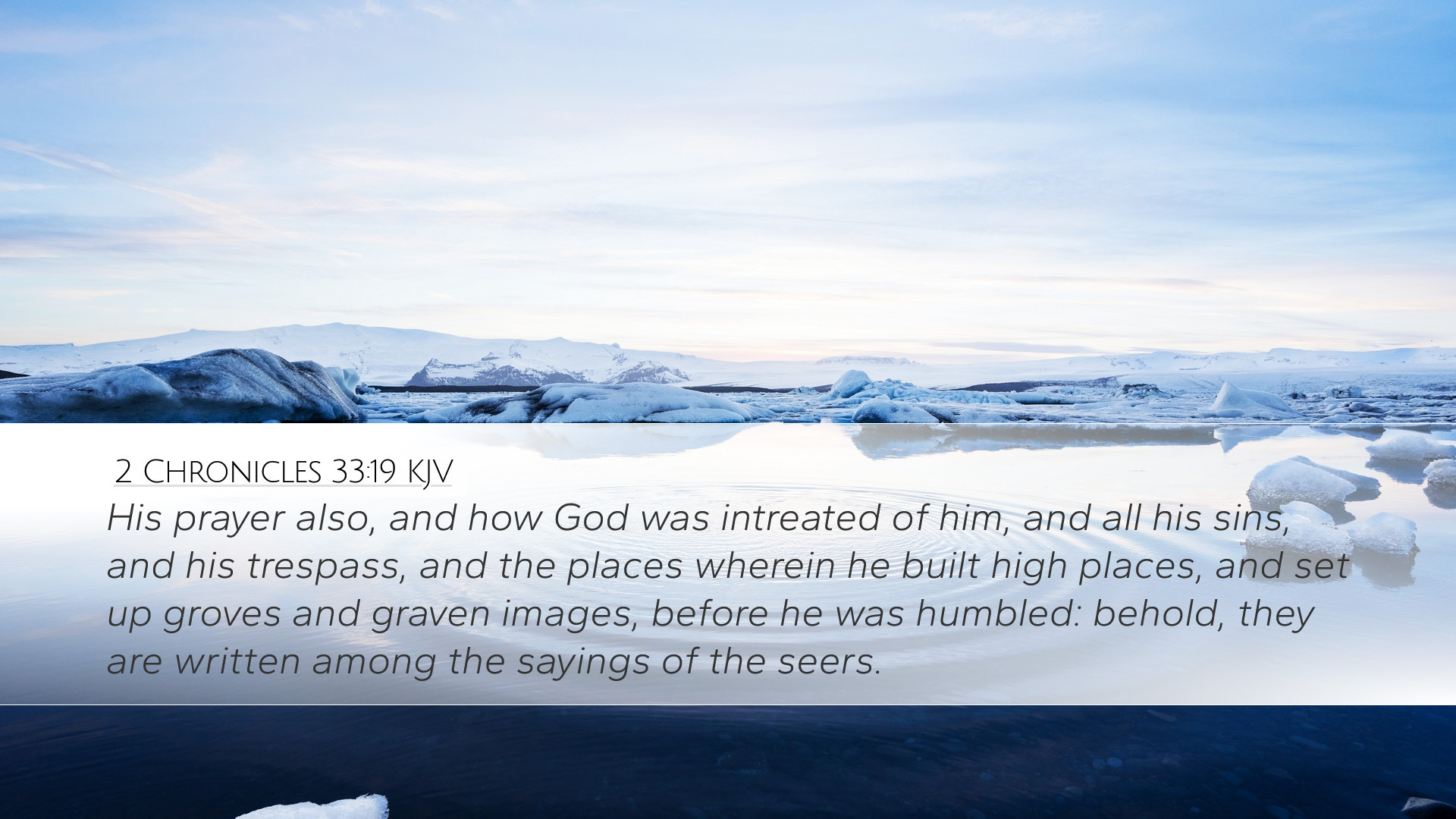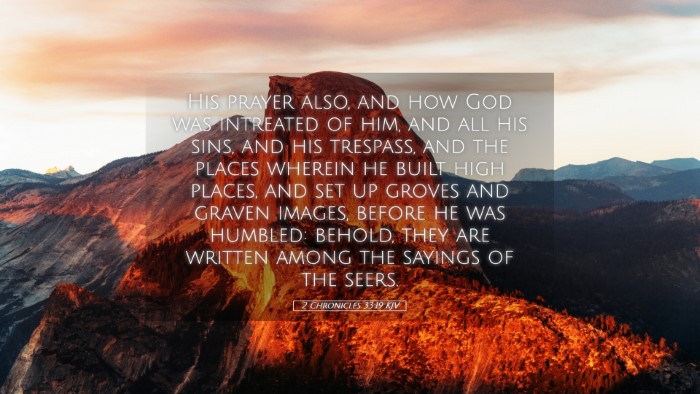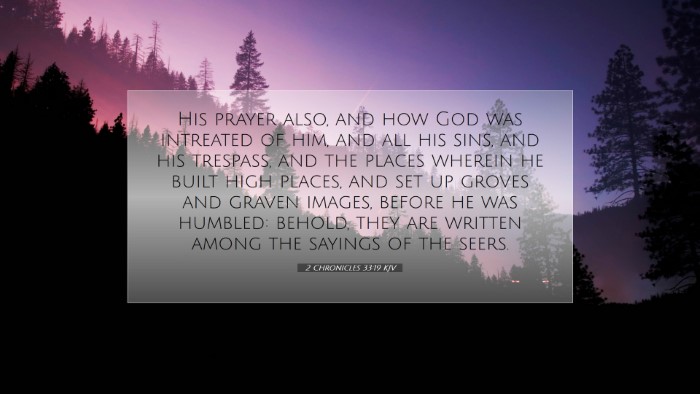Commentary on 2 Chronicles 33:19
Verse Context: 2 Chronicles 33:19 reads, "His prayer also, and how God was entreated of him, and all his sin and his trespass, and the places wherein he built high places, and set up groves and graven images, before he was humbled: behold, they are written among the sayings of the seers."
Introduction
This verse concludes the account of King Manasseh of Judah, one of the most notorious kings of Israel, known for his idolatrous practices and eventual repentance. The verse highlights the significance of his prayer, the mercy of God, and the documentation of these events.
Historical Context
The reign of Manasseh is marked by severe idolatry and defiance against the commandments of the Lord, which was a significant factor in the later judgment upon Judah. His reign lasted for 55 years, and he was taken captive by the Assyrians, after which he repented and turned back to the Lord.
Commentary Insights
Matthew Henry's Exposition
Henry emphasizes the remarkable nature of Manasseh’s prayer and the profound grace of God. Despite his many sins, God heard him:
- Manasseh's Sinfulness: Henry notes the extent of Manasseh's idolatry, which included child sacrifice, and recognizes this as contrary to the Law of Moses.
- Repentance and Prayer: He highlights that even in his lowest state, Manasseh turned to God in sincere repentance. Henry views this as a testament to the accessibility of God’s mercy and grace.
- The Role of the Seers: Henry discusses the significance of “the sayings of the seers” as a historical record and a spiritual lesson on the necessity of heeding God's messengers.
Albert Barnes' Notes
Barnes focuses on the theological implications of Manasseh’s story:
- The Theology of Repentance: Barnes argues that Manasseh’s repentance serves as a powerful example of how God can redeem even the worst offenders, emphasizing the transformative power of sincere remorse.
- Documentation of Sin and Repentance: He notes that the chronicler’s recording of these events serves to remind God’s people of His patience and readiness to forgive if one genuinely seeks Him.
- The Importance of Records: The mention of “the sayings of the seers” points to the importance of historical accounts in guiding future generations to avoid similar sins.
Adam Clarke's Commentary
Clarke provides a detailed analysis focusing on the narrative's structure and spiritual implications:
- God’s Response to Sincere Prayer: Clarke emphasizes that God’s response to Manasseh’s plea illustrates the nature of divine compassion—no matter how far someone has strayed, there is hope for restoration.
- Personal Reflection: He calls for readers to reflect on their lives, encouraging believers to consider the magnitude of God’s mercy in light of their own transgressions.
- Contrast Between Sin and Humility: Clarke portrays the contrast between Manasseh’s pride during his reign and his subsequent humility, demonstrating that true spirituality is often preceded by humbling experiences.
Theological Reflections
The narrative of Manasseh carries profound theological implications for understanding sin, repentance, and divine mercy:
- The Depth of Human Sin: Manasseh’s story is a stark reminder of human depravity, illustrating that no one is beyond the reach of God’s judgment.
- The Boundless Nature of God's Mercy: The ultimate message of this passage is the hope found in repentance. It assures believers of God's willingness to forgive and restore those who genuinely seek Him.
Application for Pastors and Theologians
This commentary has significant implications for pastoral ministry and theological studies:
- Encouraging Repentance: Pastors can draw from Manasseh’s story to teach congregations about the importance of humility and the necessity of repentance in the Christian life.
- Understanding Grace: The narrative serves as an anchor for the doctrine of grace, stressing that no one is too far gone for God's saving power.
- Recording God’s Work: The mention of seers underscores the importance of documenting spiritual lessons, both as a historical record and for future edification.
Conclusion
In summary, 2 Chronicles 33:19 encapsulates a pivotal moment of redemption in the life of Manasseh, reflecting both the gravity of sin and the grandeur of God's mercy. It invites all who read it to acknowledge their own need for repentance and to rejoice in the grace that is offered through sincere faith. The role of historical acknowledgment and documentation, as indicated by the chronicler, calls believers to reflect on the past for the sake of future faithfulness.


